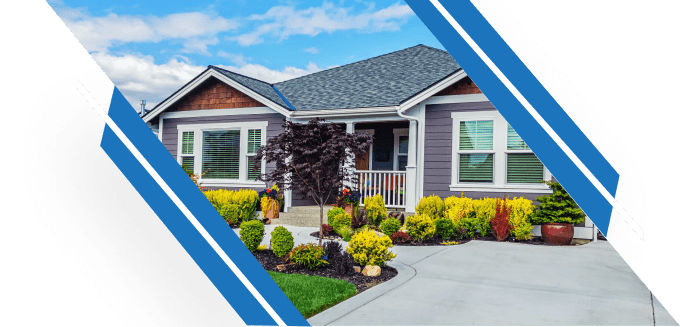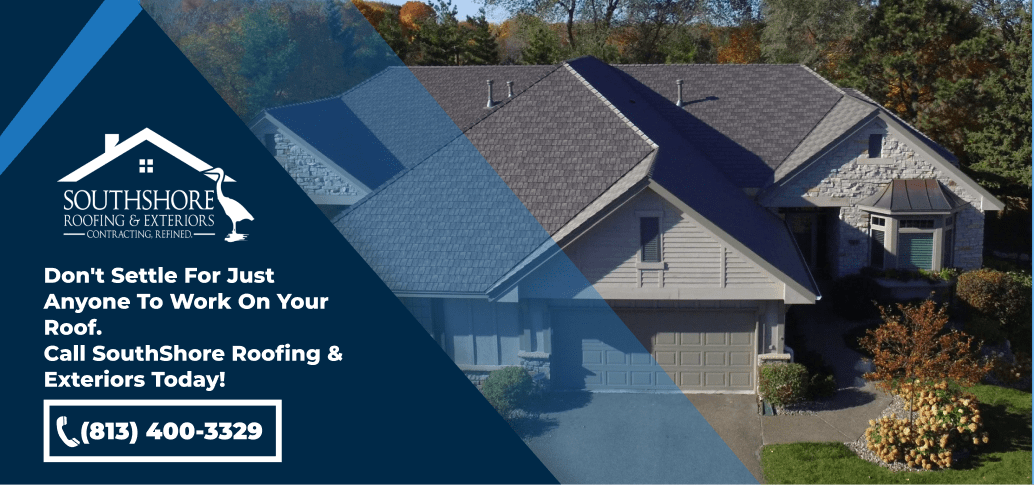Underlayment is an important part of residential roofing systems that prevents water from seeping into the roof deck. This protective barrier sits directly beneath the primary roofing material, creating an additional layer between the elements and the interior structure of a home. While many homeowners wonder if roof underlayment is waterproof, the answer depends largely on the specific type of material chosen and how it’s installed.
The distinction between waterproof and water-resistant plays a significant role in underlayment performance. Most standard roof underlayment types offer water resistance rather than complete waterproofing. Felt underlayment, a traditional option, provides basic moisture protection but can absorb water over time. On the other hand, synthetic materials typically offer superior water resistance and durability.
The quality of your roof underlayment installation directly impacts its effectiveness as a moisture barrier. Even the best roof underlayment materials can fail to protect against water damage if installed incorrectly. Understanding how different underlayments perform in wet conditions helps homeowners choose the best option for their roofing system’s long-term protection. The right underlayment choice, combined with professional installation, creates a reliable defense against moisture infiltration that can cause expensive structural damage.
How Different Underlayment Materials Handle Water
Traditional felt underlayment has served as the standard roof moisture barrier for decades, offering basic water resistance through its asphalt-saturated paper construction. This organic material provides temporary protection against moisture penetration but has notable limitations in wet conditions. Felt underlayment can absorb water when exposed to prolonged moisture, potentially leading to deterioration and reduced effectiveness over time. The material becomes very vulnerable during extended installations or when exposed to heavy rainfall before the primary roofing material is installed.
Modern synthetic underlayment options are seen as a significant advancement in roof underlayment technology and water protection. These polymer-based materials offer superior moisture blocking performance compared to traditional felt options. When comparing synthetic vs. felt underlayment, synthetic materials show better resistance to water absorption and maintain structural integrity even when saturated.
The best roof underlayment materials now feature enhanced water resistance properties that create more reliable barriers against moisture infiltration. Synthetic options typically include slip-resistant surfaces that improve safety during installation while providing extended UV protection. These advanced materials can withstand temporary exposure to weather conditions without compromising their protective function, making them increasingly popular choices for comprehensive roofing system protection.
Synthetic vs. Felt Underlayment for Water Protection
When comparing synthetic and felt underlayment in humid or rainy environments, significant differences emerge in their long-term protection capabilities. Synthetic underlayment jas superior resistance to water penetration, maintaining its protective barrier properties even after prolonged exposure to rain and humidity. The material’s non-absorbent polymer construction prevents water from soaking through, while felt underlayment can become saturated and lose effectiveness during extended wet periods.
Over time, felt materials tend to develop weak points where water can penetrate after repeated wet-dry cycles, particularly around fastener locations and seams. Synthetic options maintain consistent water resistance throughout their service life, with many products offering enhanced tear resistance that prevents moisture entry through mechanical damage.
Weather exposure also affects each roof underlayment type differently. Felt underlayment may deteriorate when exposed to UV rays and temperature fluctuations, reducing its ability to function as an effective moisture barrier. The best roof underlayment materials in the synthetic category resist degradation from environmental factors while providing reliable secondary protection. Proper roof underlayment installation techniques are critical with felt materials, as synthetic options are more forgiving when installation conditions are less than ideal, ensuring consistent moisture protection regardless of weather challenges during construction.
Installation Quality Impact on Water Resistance
The effectiveness of any roof underlayment depends on the installation techniques used. Professionals pay careful attention to overlap patterns, fastener placement, and seam sealing to create a continuous protective layer. When installers follow manufacturer specifications during installation, the underlayment performs as designed to block water infiltration and prevent moisture from reaching the roof deck.
Proper installation begins with correct overlap measurements, typically requiring four to six inches of horizontal overlap and six inches at vertical seams. Even the best roof underlayment materials lose their protective value when overlaps are insufficient or improperly aligned. Fastener placement is also important for maintaining water resistance, as over-driven or misplaced nails can create penetration points where moisture can enter the roofing system.
Installation errors can compromise the water protection capabilities of even premium roof underlayment types. Wrinkled or loose underlayment creates pockets where water can pool and eventually penetrate through gaps or worn areas. Inadequate seam treatment allows moisture to migrate between overlapping sections, defeating the purpose of the secondary barrier. Poor timing during installation can expose the underlayment to weather conditions that damage its protective properties before the primary roofing material provides coverage. These installation mistakes transform effective moisture barriers into potential failure points that allow water to damage the roofing structure.
Top Performing Underlayment Materials for Maximum Water Protection
Premium synthetic underlayment options deliver exceptional performance, specifically designed for challenging climates. These advanced materials feature multi-layer construction with polymer cores that completely resist water absorption while maintaining flexibility and durability. High-performance synthetic products often include specialized coatings that enhance their ability to shed water quickly, preventing any moisture from penetrating through to the roof deck. The superior tear resistance of premium synthetics ensures the moisture barrier remains intact even under stress from wind uplift or thermal movement.
Several budget-friendly alternatives provide reliable water resistance and protection. Standard synthetic underlayment offers significantly better moisture protection than traditional felt while remaining affordable for most residential applications. These synthetic options maintain consistent water resistance properties and resist UV degradation better than organic felt materials. Modified felt products are another affordable choice, incorporating enhanced asphalt formulations that improve water resistance compared to basic felt underlayment.
The best roof underlayment materials balance performance and practical considerations for different projects. Premium synthetics excel in extreme weather conditions and provide extended temporary weather protection during construction delays. Budget-conscious options are still effective moisture barriers when installed according to the manufacturer’s specifications. Choosing appropriate underlayment depends on factors including roof pitch, expected weather exposure, and long-term performance expectations for the complete roofing system.
Signs Your Underlayment Is Failing to Block Water
Recognizing early warning signs of underlayment failure helps prevent extensive water damage to roofing structures and interior spaces. Water stains appearing on ceilings often indicate that the roof underlayment has been compromised and can no longer effectively block moisture. These discolored patches typically develop gradually as water seeps through damaged underlayment and into the ceiling. Dark or yellowish stains spreading across ceiling areas signal that both primary roofing material and secondary protection have failed to prevent water infiltration.
Musty odors throughout the home frequently accompany underlayment failure, as trapped water creates ideal conditions for mold and mildew growth. Attic inspections may reveal visible signs of moisture damage, including wet insulation, water droplets on rafters, or damp wood surfaces during or after rainfall. Even the best roof underlayment materials eventually deteriorate when exposed to prolonged moisture exposure or physical damage from weather events. Felt materials often show obvious signs of deterioration, while synthetic options may fail more suddenly without visible warning signs.
A professional assessment is essential when homeowners notice any combination of water damage indicators throughout their property. Experienced roofers can identify compromised roof underlayment and determine whether partial repairs or complete replacement provides the most effective solution. Prompt professional intervention prevents minor underlayment failures from developing into major structural damage that requires extensive repairs and interior restoration work.
Which Roof Underlayment is Right for You?
Selecting appropriate underlayment for residential roofing systems requires looking at your specific roof and local climate. Roof pitch influences underlayment performance, with low-slope applications needing a more robust moisture barrier than steeper installations. The condition of the existing roof deck affects which roof underlayment will provide optimal protection, as damaged or aging substrates may require enhanced water resistance. Home age and architectural style also influence material selection, with older structures potentially benefiting from synthetic upgrades that offer improved moisture protection.
Climate considerations play a significant role in determining the best roof underlayment materials for long-term performance. High-humidity environments require underlayment with superior moisture barrier properties that resist water absorption and prevent condensation-related problems. Frequent storm activity requires tear-resistant materials that maintain protective integrity under severe weather conditions. Temperature extremes affect underlayment flexibility and adhesion properties, making material selection critical for preventing thermal stress failures that compromise its water protection.
Professional roofing contractors can match underlayment specifications to your project requirements. Qualified installers understand how different roof underlayment types perform under various conditions and can recommend options based on your budget and performance expectations. Proper roof underlayment installation requires specialized knowledge and experience that ensures maximum effectiveness of the chosen moisture barrier. Working with certified roofing professionals eliminates guesswork and provides confidence that the selected underlayment will deliver reliable water protection throughout its service life.
Choose SouthShore Roofing & Exteriors for Superior Underlayment Installation in Tampa
When it comes to safeguarding your home from water damage, the choice of underlayment is crucial. At SouthShore Roofing & Exteriors, we recommend and install top-tier synthetic underlayment materials that provide robust water resistance and durability against harsh weather.
Synthetic underlayments are designed to offer superior moisture protection compared to traditional felt options. This material not only prevents water infiltration but also withstands long-term exposure to the elements, ensuring your home stays protected year-round. With our expert installation services, you can be confident that your roof underlayment is perfectly installed to maximize water resistance and extend the lifespan of your roof.
Protect your home today by calling SouthShore Roofing & Exteriors at (813) 400-3329. Ensure your roof is equipped to handle whatever the Tampa climate throws at it with our premium underlayment solutions.




